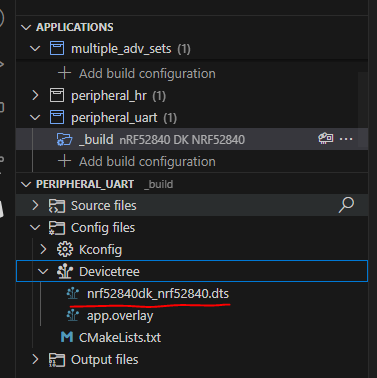Hello,
I am programming BLE with the nRF52840-DK.
- Toolchain Manager: v1.3.0
- IDE: Visual Studio Code (VSCode)
- SDK: ncs v2.6.0
My implementation goals are as follows:
- A(Central): Receive commands from a computer and transmit them to B via Bluetooth. Data received from B is then transmitted to the PC via UART communication.
- B(Peripheral): Acquire data from an ADC and transmit it to A via Bluetooth.

To achieve this, I have been studying the peripheral_uart (BLE UART Service) and central_uart (BLE Central UART) examples. However, I have not been able to find a way to configure the bitrate (speed) for Bluetooth in these examples. Could you point out if I am missing something?
Thank you.
P.S. Have I appropriately assigned the roles of central and peripheral?



